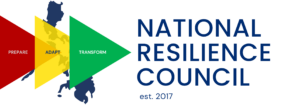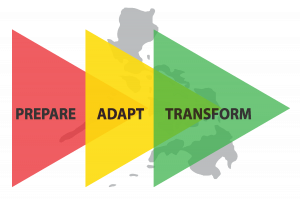By Amb. Roberto R. Romulo
The National Disaster Risk Reduction Management Council has enhanced their capability substantially since Typhoon Haiyan/Yolanda. On the other hand, the private sector pioneered by the Philippine Disaster Resilience Foundation (PDRF) led by Manuel V. Pangilinan and Jaime Augusto Zobel de Ayala has also done an extremely credible job. Yet neither organization will ever proclaim they are fully prepared, particularly in the case of earthquakes. The key challenge for all is in building a shared scientific understanding of pre- and post-disaster risk in order to jointly develop integrated solutions for national resilience.
Much has been written about the consequences of an earthquake in Metro Manila. MMDA has done as much as can be expected but again much has to be done. The local governments are the front line and much more support and training will be required. More importantly, the general public must be made more aware of their vulnerabilities. The “Bahala Na” attitude must be transformed to a “Be Prepared” commitment. There are also the estimated four million informal settlers in Metro Manila. They deserve much more attention. One important issue that has not been raised in many discussions is whether Metro Manila will be rebuilt (and where?) after it suffers around PhP2.4 Trillion in damage. Is there a there a plan for the region’s disaster recovery? Who will pay for this plan and how?
As previously stated in my last column, it is imperative that the government focus on securing protocols/agreements with foreign governments and multilateral organizations in preparation for future disasters. Allow me to quote from previous columns, examples of how forthcoming foreign countries can be:
“At its peak (Yolanda), the U.S. military efforts included more than 13,400 military personnel, 66 aircraft (including 10 C-130s to augment the AFPs 3 aircraft along with 8 MV-22 Ospreys) and 12 naval vessels. The Americans delivered more than 2,495 tons of relief supplies and evacuated 21,000 people. More than 1,300 flights were completed in support of the relief efforts to approximately 450 sites. American emergency humanitarian aid immediately following the Typhoon helped feed at least 3 million people. They provided basic emergency shelter materials, such as plastic sheeting, tents tools, and rope, to approximately 151,000 households across affected areas. In addition, nearly 38,000 households received support for self-recovery efforts through shelter repair kits, cash transfers and construction materials”.
“Another example would be the case of Yolanda and the South Korean armed forces. After surveying the needs of the population, Korea made a policy decision to stay, on a rotational basis, for a year in Leyte in order to support recovery and reconstruction efforts in the aftermath of Yolanda”.
Even the Chinese donated $2million and belatedly sent a hospital ship.
I am certain that our foreign partners will be equally forthcoming in earthquakes and other future disasters. I know for a fact that foreign embassies are prepared to work with us. But this time, we should prevent and prepare ahead of time. Fortunately, the new Acting Secretary of Foreign Affairs Ricky Manalo has agreed to jumpstart this endeavor assigning Undersecretary Ariel Abadilla to take the lead.
On April 25-26, we will host a Conference on “Building a Disaster Resilient Philippines”.
The conference is hosted by the Carlos P. Romulo Foundation, the Zuellig Family Foundation, the PDRF, the Manila Observatory and for the first time, we welcome ARISE Philippines (headed by Mr. Hans Sy). During this two day affair, we aim to consolidate all the efforts described above.
There will be more than 30 speakers representing foreign experts, senior government officials and representatives of the private sector, both corporate and NGOs. Drawing on the presentations and discussions, the conference seeks to identify the gaps in current disaster preparedness, prevention, response and recovery plans both within the public and private sectors and between them.Action plans and recommendations for much needed legislation to support integrated, multi-stakeholder efforts will then be advanced.
The session topics include lessons learned from recent earthquake disasters and pathways to enhancing risk reduction measures. The resilience of our health, infrastructure and local government sectors will be assessed and an overview of pre-disaster recovery planning, policy and practice will be presented. Most importantly, the current legislative agenda on both disaster risk reduction and resilience will be examined along with proponents in Congress and the NDRRMC-OCD.
I draw your attention to the local government portion where speakers will be Mayor Abigail Binay of Makati City; Dr. Cedric Daep, Chief of Albay Public Safety and Emergency Management Office; Mr. Ritchie Van Angeles, Chief of Pasig City DRRM office and Mayor Melchor Mergal of Salcedo municipality in Eastern Samar.
Speakers on the resilience of our critical infrastructure include: Ed Chua of Shell; DPWH Undersecretary Cathy Cabral, President of the Philippine Institute of Civil Engineers and Undersecretary of DPWH; Mr. Bill Luz, PDRF; Engineer Erick Sison, President of the Association of Structural Engineers of the Philippines and urban planners Dr. Arturo G. Corpuz, a board director of Ayala Land and Arch. Nathaniel von Einsiedel whose expertise in disaster recovery and urban planning is well-known.
The final session will encapsulate action plans and legislative proposals which will emerge from all the sessions. We have invited members of the House and Senate to react. To date none have accepted. I hope there will be last minute acceptances who are committed to disaster resilience. It has been said that disasters are really failures of governance. Presumably, all of us understand this.
In conclusion, I quote from UNISDR:
“Weak governance is a driver of disaster risk, and is linked to many other risk drivers such as poverty and inequality, poorly planned urban development… To be most effective in reducing disaster risk, an integrated systems approach to governance, featuring strong coordination across sectors and a delegation of responsibilities to the local level is needed.”
Interested parties may email [email protected]
SOURCE:
Romulo, R. (2017, April 20). Earthquakes: Are we prepared? Filipino Worldview. Retrieved from https://www.philstar.com/business/2017/04/20/1687368/earthquakes-are-we-prepared
![]()


